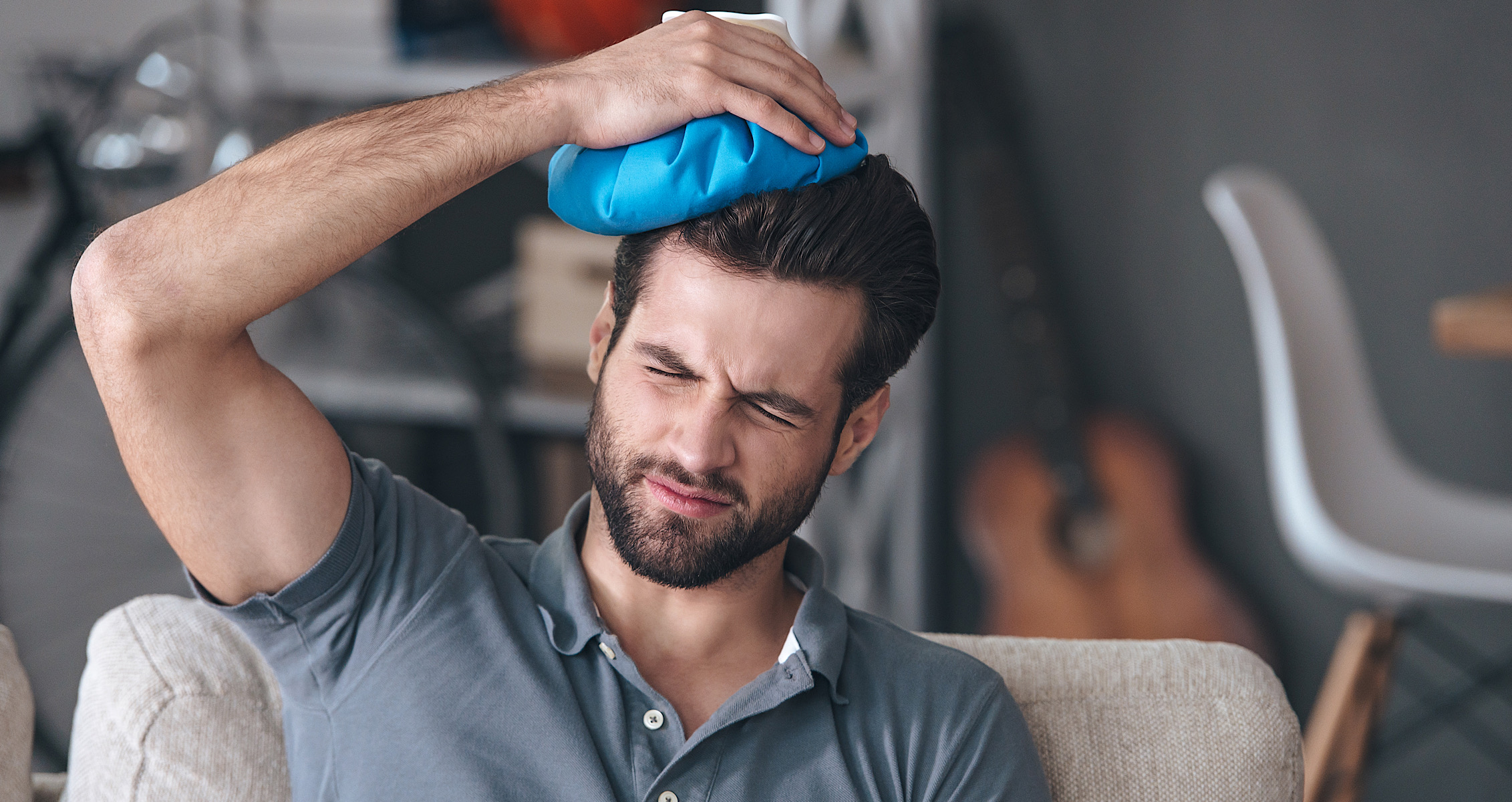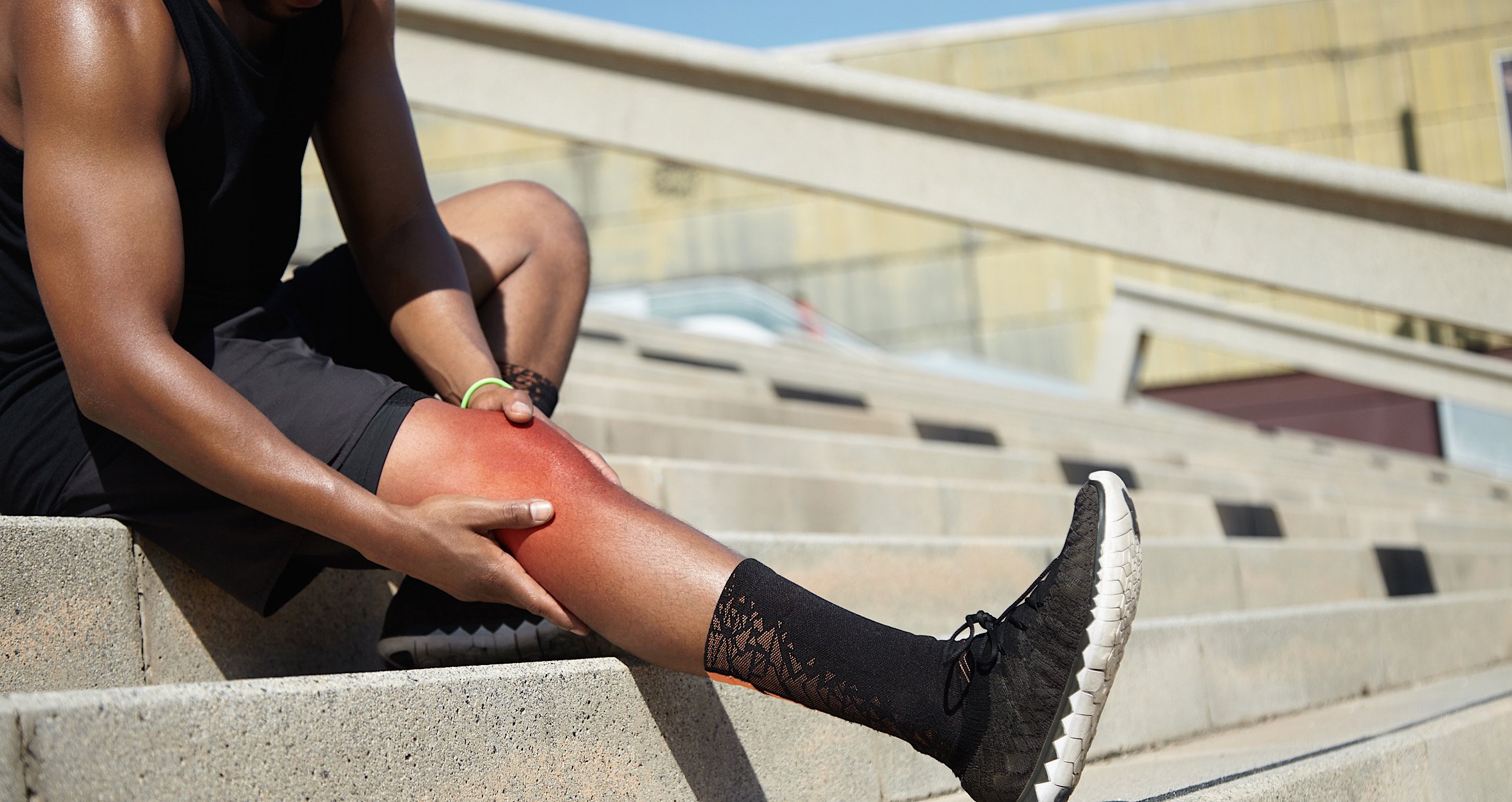How to Treat Common Gym InjuriesA tweak here and there in the gym is common amongst regular gym-goers or newbies. The human body is fragile and gym injuries are bound to happen at some point or another. Sometimes this may prevent you from pushing yourself to your fullest capability, or you’re afraid if you injure yourself you’ll lose all your progress.
Don’t panic though! There’s a healing methodology that is effective in treating minor gym-related injuries to get you back to hitting personal records (PRs) and coming one step closer to your dream physique.
If you’ve recently had a tweak, sprain, or strain in the gym or want to know what to do in case that happens, below covers the acronym, RICE (rest, ice compression, elevation), which is used to treat various injuries.
R.I.C.E.

R.I.C.E. is a common methodology used for treating diverse sprains and strains. It stands for rest, ice, compression, and elevation. Below, you’ll learn how to follow each approach to get you back to hitting PRs.
Rest
As it sounds, the first step in the RICE process to begin the healing of your injury is to rest your injured area. To do this, simply avoid using the muscle that you injured at all costs. In general, you’ll want to rest your entire body as well to speed up the healing process. Make sure you don’t put any weight on your injury.
Resting your injured area is especially vital during the first two days after the injury. Any activity, especially to the injured muscle, can delay your body’s ability to heal it, or worse, exacerbate it. So if there’s ever a time to take a rest day, now’s the time if you’ve injured yourself!
Ice
For the first 24-48 hours after you’ve injured yourself, you’ll want to ice the injured area for 10-20 minutes every couple of hours. This will reduce pain and swelling by allowing more blood flow to the injured area. (1)
To do this, apply an ice pack covered in a towel (to reduce frostbite and irritating your skin).
*Tip: if you don’t have an ice pack use a frozen bag of vegetables. These easily form into the shape of your muscle to fully ice your injured area.
After about 48 hours, you can begin alternating icing and heating your injured area.
Compression
Compressing your injured area is important to prevent swelling. You’ll use an elastic bandage to wrap around your injury. You want the compression to be tight enough to be effective but not tight enough that it interrupts blood flow. If you feel any numbness, tingling, or your skin turns blue or feels cold, that means the bandage is too tight, and you’ll need to loosen it.
Elevation
The final step in the RICE method of treating injuries is to elevate your injured area above your heart rate. This will help you reduce any pain, throbbing, and swelling. For example, if you have a sprained ankle, you’ll lie supine (on your back) on a couch, and prop your ankle and leg comfortably on a pillow at an incline.
*Tip: Taking a pain reliever such as acetaminophen (Ibuprofen, e.g. Advil) or nonsteroidal anti-inflammatory drugs (NSAIDs) (Naproxen, e.g. Naprosyn) can help reduce pain as well until your injury is fully recovered.
Common Gym-Related Injuries

When you’re in the gym, there are certain injuries that are common to happen likely at least some point in your weightlifting career. You’re only human after all. Below, is a list of common gym-related injuries.
- Muscle sprain – pecs, lats, quads, hamstrings
- Sprained ankle
- Shoulder injury
- Knee injuries
- Shin splint
- Tendinitis
- Wrist pain or dislocation
When Can You Use the RICE Method?
Anytime you have a soft tissue injury, such as an injury to your muscle, tendon, or ligament, you’ll practice RICE.
Soft tissue injuries are musculoskeletal injuries, including sprains, strains, and contusions (bruises) which RICE has been shown to be very effective for. However, if you’ve broken a bone or have a serious injury, you’ll need to see a doctor since often medication, surgery, or physical therapy may be required.
How Long Does an Injury Take to Heal?
Depending on the injury will determine how long injuries take to heal; some muscles will take longer to heal than others. A minor sprain or strain can feel almost fully healed after two weeks, however, you may want to avoid running or strenuous activities for up to 8 weeks to decrease your chances of further damaging the injury.
Below, you’ll find a general timeline of common gym injuries to follow to determine how long each injury may take to heal.
- Moderate ankle sprains – 3-4 weeks
- Severe ankle sprains – 3-6 months
- Wrist sprain – 2-10 weeks
- Mild muscle strain – 3-6 weeks
- Severe muscle strain – several months
- Mild hamstring strain – 3-8 weeks
- Severe hamstring strain – 3 months
- Mild pulled chest muscle (strain) – 2-3 weeks
- Severe chest muscle tear (strain) – several months
In general, sprains will take longer to heal than strains since sprains are injuries to your ligaments. Although there is no exact amount of time it will take for each injury to heal since each injury is different and everyone’s body differs.
What Causes Sprains and Strains?
Sprains happen when you overextend or tear a ligament while severely stressing a joint. For example, if you’re doing dumbbell jumping squats and land awkwardly.
Strains occur when you suddenly or unexpectedly tear your muscle from injuries or trauma, including not warming up before physical activity, poor flexibility, and overtraining. For example, if you’re doing barbell bench press and used the most weight you’re capable of using without a proper warm-up. Chronic strains can also occur from repetitive movements, such as rowing, tennis, and golf.
Preventing Injury
Light Cardio
Now, even though getting injured in the gym is common, you can take preventative measures to reduce your risk of getting injured. For one, partaking in a proper warm-up will drastically reduce your chances of getting injured. Warming up your muscle’s body temperature primes them for the workout, meaning an increased workout performance because if your muscles temperature is increased, the less likely you are to get injured. That’s why you see athletes warm up before playing their sport.
The best way to increase your body temperature before working out in the gym is to hop on the treadmill, elliptical machine, or recumbent bike for 5-10 minutes. You’ll keep the intensity low. Don’t go overboard on trying to get a cardio workout in, or you’ll just decrease your workout performance for your actual workout.
Warm-up Sets
Secondly, getting a couple of warm-up sets on the first exercise of the muscle group you’re working with will prevent injury as well. That’s because you’ll be warming up your muscles for the movement and the rest of the workout you’re doing. This will also allow you to use heavier weight during your “real” sets since you’re prepping your body for the movements. (2)
Making sure you’re hydrated is also important to prevent injury in the gym or while playing a sport. So make sure you’re drinking plenty of water and getting in electrolytes. (3)
Cooling Down
Allowing your body to cool down after working out is imperative to return to homeostasis. This will ensure you don’t have illnesses or faint when you’re ready to carry on with your day.
Stretching
Stretching will increase your range of motion (ROM), which will decrease your chances of injury since you’ll be more mobile for exercises. The ideal time to static stretch — holding a stretch for a period — is after a workout and cooling down though. Plus, it’s best to stretch your muscles after working since your muscles will be more elastic.
Stretch for at least 5 minutes and hold each stretch for 20-30 seconds for the best results.
Conclusion
Getting injured in the gym is common amongst all levels. Whether you’re an advanced athlete or a newbie, injuries can happen to all of us. If you have a minor sprain or strain, which are fairly common when working out, following the RICE injury treatment method may help you recover faster, reduce your chances of exacerbating your injury, and reduce pain.
Have you ever injured yourself in the gym before? If so, let us know what happened and follow us on Instagram, Facebook, and Twitter.
References
1 – Mac Auley D. C. (2001). Ice therapy: how good is the evidence?. International journal of sports medicine, 22(5), 379–384. https://doi.org/10.1055/s-2001-15656
2 – Fradkin, Andrea J1; Zazryn, Tsharni R2; Smoliga, James M3 Effects of Warming-up on Physical Performance: A Systematic Review With Meta-analysis, Journal of Strength and Conditioning Research: January 2010 – Volume 24 – Issue 1 – p 140-148 doi: 10.1519/JSC.0b013e3181c643a0
3 – Von Duvillard, S. P., Braun, W. A., Markofski, M., Beneke, R., & Leithäuser, R. (2004). Fluids and hydration in prolonged endurance performance. Nutrition (Burbank, Los Angeles County, Calif.), 20(7-8), 651–656. https://doi.org/10.1016/j.nut.2004.04.011
